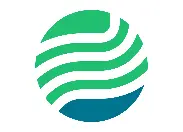On September 27 2024, our co-founder Dr. Brecht De Tavernier was invited at Aquafin by the Flemish Knowledge Center for Water (VLAKWA). At their theme day on the green deal for sustainable care regarding medicines in wastewater, Brecht was invited to give a presentation to start the discussions on this topic.
Pharmaceuticals in wastewater: what can you co about it?
The European Water Framework Directive (WFD) is the most important European legal instrument for protecting water bodies. It is best known for stating that all surface and groundwater should be of good quality by 2027. The WFD has a list of 45 polluting chemicals (industrial chemicals, pesticides, medicines, and metals) that are designated as priorities. Once on the WFD list, the negative effects on the environment must be resolved within 20 years.
The WFD has the following medicines on its high-priority list:
- Carbamazepine
Carbamazepine, used to treat epilepsy and sometimes complex pain issues (brand name: Tegretol), was detectable in 62% of rivers worldwide and has a very negative effect on plants and fish. Demonstrated effects are negative impact on hormonal balance and fertility, lower immunity, and altered behavior.
- NSAIDs Diclofenac and Ibuprofen
The NSAIDs (medications for fever and inflammation) diclofenac (brand name: Voltaren) and ibuprofen (brand name: Nurofen) are the medicines that are measurable in the highest concentrations in the Baltic Sea. Diclofenac has been on the WFD list since 2015. Both are highly ecotoxic to plants and fish but have particularly severe negative effects on birds, especially vultures, which are extremely sensitive to even low concentrations of diclofenac. They develop kidney failure as a result and die. The wild populations of the Asian white-backed vulture have already declined by 95% due to severe pollution with active ingredients from NSAIDs in the rivers of Pakistan and India, as well as from consuming carcasses of cattle treated with diclofenac for joint inflammation. Ibuprofen is still significantly inactivated in the classical process of water purification (physical and chemical treatment), but this is not the case for diclofenac: it enters the environment in its active form and causes considerable environmental damage.
- Estrogens
The WFD has included the estrogens estrone (E1) (brand name: Aacifemine), 17-beta-estradiol (E2), and 17-alpha-ethynyl-estradiol (EE2) (brand names: Progynova, Estrofem) on this list. In nature, they act as endocrine disruptors for many animals and plants and have a negative effect, especially on small invertebrates and fish.
- Macrolide Antibiotics
The macrolide antibiotics azithromycin (brand name: Zithromax), erythromycin, and clarithromycin (brand name: Biclar) have a negative effect on algae, crustaceans, fish, and invertebrates. They cause oxidative stress, negative effects on gene expression, energy metabolism, and DNA replication and repair. Ultimately, these antibiotics released into the environment also have negative effects on antibiotic resistance (Antimicrobial Resistance or AMR). Among the macrolides, the negative environmental impact seems to be the most for azithromycine and the least for erythromycin. Similarly, the negative effect on antibiotic resistance appears to be most for clarithromycin and least for erythromycin.
How is Belgium doing?
Not well. In a measurement of active pharmaceutical ingredients in 137 rivers, a concentration of over 10,000 ng/L of active medicines was measured in a Brussels river. This places the water quality in Brussels among the worst 20% of rivers in the world regarding the presence of active medicines.

What can we do about it?
This is a complex problem, and the solution will be multifactorial.
Water treatment plants can build large filters that treat the purified wastewater with ozone and then activated carbon after the classical physical and chemical treatment (with high concentration oxygen injection). Ozone inactivates and breaks down the components, while activated carbon captures and removes the medicines from the water. This combined method is very effective (> 90% reductions) in purifying medicines.
Aquafin built one of the first such installations in Aartselaar, where, among the treatment of the wastewater of many households, the wastewater from the Antwerp University Hospital is treated. This installation is currently in the startup testing phase. The problem is the relatively high cost and the fact that there are more than 300 wastewater treatment plants just in Flanders to purify wastewater. Smaller modules, the size of a container, with this combined technology of ozone and activated carbon, are available, and for example, the site of Jansen Pharmaceutica in Beerse uses this technology. Large wastewater treatment plants, especially those serving an acute hospital or a factory where medicines are produced, should certainly consider this investment.
In the future, we estimate that hospitals and possibly also nursing homes, where wastewater is also a hotspot for medicines, will have the opportunity to apply such filtering on a smaller scale.
Of course, there is much use of medicines outside the walls of hospitals and nursing homes, and we also believe that doctors need to be increasingly aware of the environmental impact of certain medicines in their prescribing behavior. Almost all medicines on the WFD high-priority list are prescription-only. Substitution with other product classes to treat the same problem is considered a real possibility. For example, phasing out the prescription of diclofenac seems to us to be strongly considered for this reason. Of course, this is a field that is also scientifically evolving, and hopefully clearer guidelines will emerge soon.
The prescribing behavior within veterinary medicine, where anti-inflammatories and antibiotics are frequently used, will also need to be addressed. And on a smaller scale, it is important that individuals return unused and expired medicines to their pharmacies.
(Sources: Wilkinson et al PNAS 2022, Santariova et al Animals 2023, Naidoo et al Chemosphere 2018, Adeel M et al Environ Int 2017, Hortense Torres et al Chemosphere 2021, Li et al J Hazard Mater 2022, Monahan et al Science Total Environment 2023)
